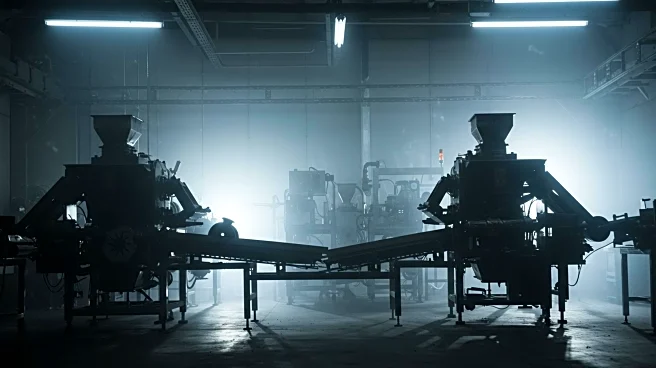What is the story about?
What's Happening?
The United States has experienced significant manufacturing job losses since the turn of the century, with over 4.5 million jobs disappearing between 2000 and 2024. Despite this decline in employment, the real manufacturing GDP has grown by 45%, indicating a disconnect between job numbers and production output. The hardest-hit sectors include computer and electronics manufacturing, which lost over 750,000 jobs, and printing, which saw a reduction of 450,000 jobs. States in the Northeast, such as New York, Rhode Island, and Massachusetts, have suffered the steepest declines, losing over 40% of their manufacturing workforce. California, Ohio, and Michigan are among the states with the most significant total job losses. The shift towards automation and advanced manufacturing processes has contributed to this trend, allowing for increased productivity with fewer workers.
Why It's Important?
The decline in manufacturing jobs, despite increased output, highlights a significant shift in the U.S. industrial landscape. This trend underscores the growing role of automation and technology in manufacturing, which reduces the need for manual labor. While this shift can lead to higher efficiency and competitiveness, it also poses challenges for workers who may face job displacement. The loss of manufacturing jobs impacts local economies, particularly in regions historically reliant on these industries. Efforts to reshore manufacturing, supported by federal policies like the CHIPS and Science Act, aim to rebuild domestic capacity but may not fully restore employment levels. The focus on high-value sectors such as semiconductors and pharmaceuticals suggests a move towards capital-intensive production, which could further widen the gap between employment and output.
What's Next?
Future developments in the manufacturing sector may include continued investment in automation and technology to enhance productivity. Policymakers and industry leaders may need to address the workforce implications of these changes, potentially through retraining programs and education initiatives to equip workers with skills relevant to advanced manufacturing. The reshoring efforts could lead to new opportunities in specific sectors, such as clean energy and pharmaceuticals, but may require strategic planning to balance job creation with technological advancements. Monitoring the impact of federal policies and tariffs on manufacturing trends will be crucial in shaping the sector's trajectory.
Beyond the Headlines
The shift towards automation and technology-driven manufacturing raises ethical and social considerations, particularly regarding workforce displacement and economic inequality. As industries become less labor-intensive, there may be a need to reassess labor policies and support systems for affected workers. The long-term implications of these changes could influence cultural perceptions of manufacturing jobs and the role of technology in society. Additionally, the environmental impact of increased production efficiency and advanced manufacturing processes may warrant attention, as industries strive to balance growth with sustainability.
AI Generated Content
Do you find this article useful?














